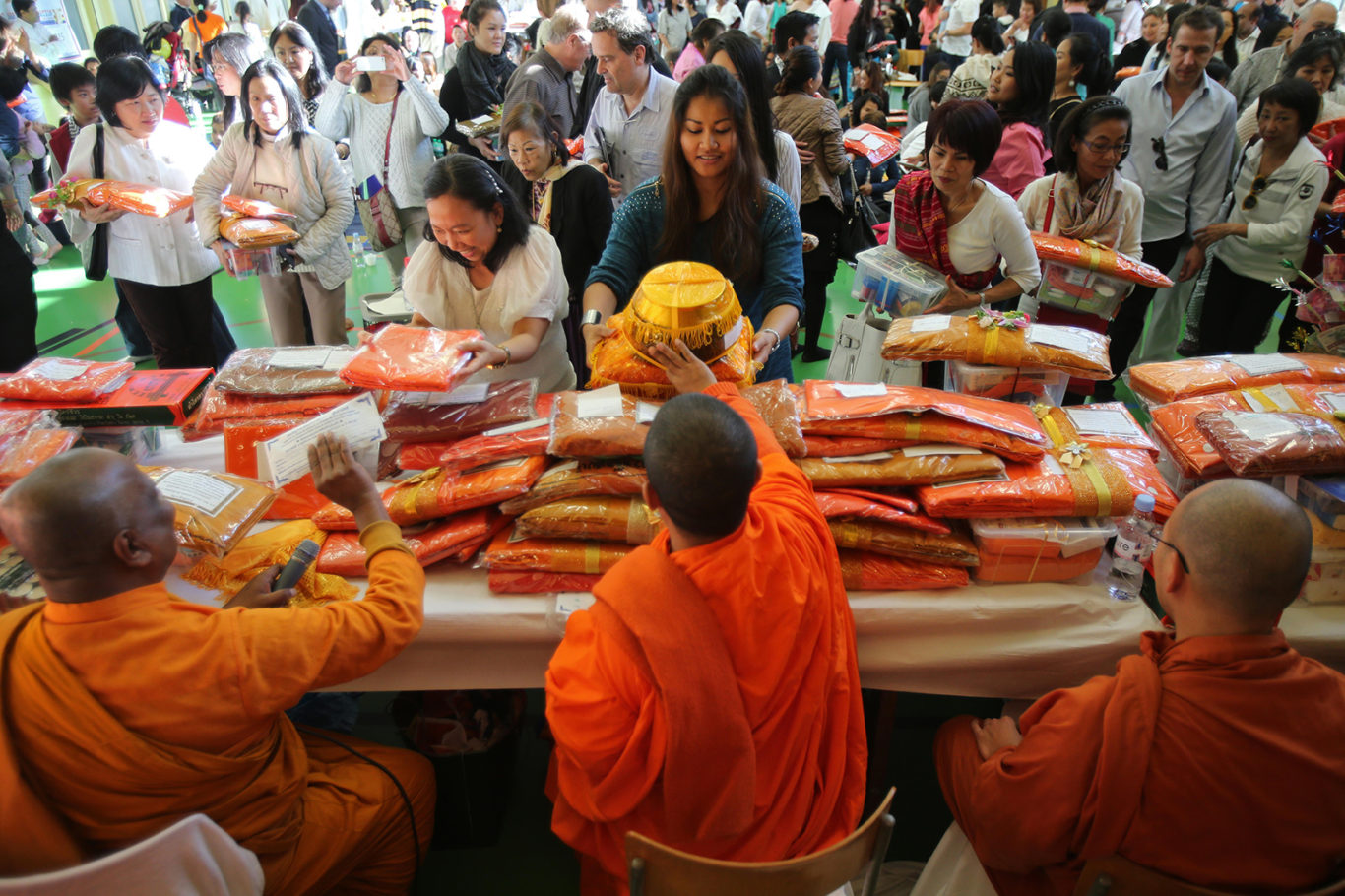Kathina

Laypeople give robes to monks at a Kathina ceremony in Geneva, Switzerland. | Godong / Alamy Stock Photo
The festival of Kathina occurs at the end of the three-month-long rains retreat in Theravada countries. The retreat itself is known as Vassa (Sanskrit, Varsa). Originally, the name Kathina comes from the Pali word “stiff” and refers to the wooden-frame used to measure monastic robes. In the present day, it has come more widely to signify the new robes given by the laity to monks and nuns at the end of the rains retreat.
In the Vinaya Pitaka, which describes the monastic code and relates narratives explaining how the rules came about, it is said that a group of monks was traveling to see the Buddha when the rains began. To avoid stepping on newly planted crops, the monks stopped traveling until the rainy season ended. While waiting, they had a particularly fruitful period of practice, but their robes were dirty, wet, and torn from sleeping outside in the rain. The Buddha was pleased with their dedication and patience when they finally arrived to see him and gave them new cloth that had been given to him by a pious lay woman. Therefore, nuns and monks traditionally are given new robes at this time of the year.
The festival of Kathina is a time, as with all Theravada holidays, for laypeople to earn merit by visiting temples and monasteries and making offerings to the nuns and monks. The typical gift is three square meters of cloth, which is the amount needed to create a robe. But other gifts are given as well. They are not given to any particular monastic resident, but to the community (sangha) as a whole, to be divided accordingly.
Kathina lasts for approximately one month and ends on a full moon. The conclusion of Kathina marks the time when the first monks departed the Buddha’s presence to spread his teachings, or dharma, to communities far and wide.

Tricycle is more than a magazine
Gain access to the best in sprititual film, our growing collection of e-books, and monthly talks, plus our 25-year archive
Subscribe now